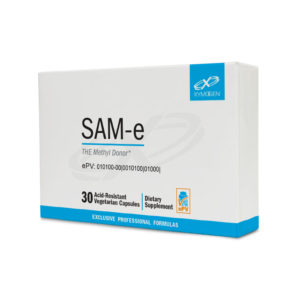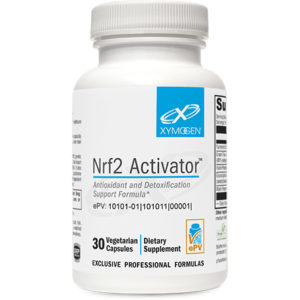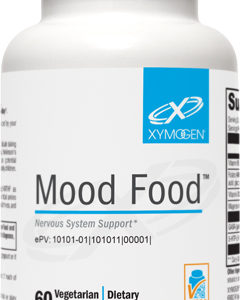Scientific Information/Data
While vitamin D3 (cholecalciferol) is made in the skin when 7-dehydrocholesterol reacts with sunlight, many things affect the degree to which this biosynthesis occurs, including time of day, seasons, location, smog/pollution, clothing, shade of skin (darker skin requires more sun), and sunscreen use. Low-cholesterol diets and certain cholesterol therapies can also affect vitamin D formation. By some estimates, one billion people worldwide have vitamin D deficiency or insufficiency.[1] Reversing deficiency and maintaining optimal serum vitamin D levels beneficially impacts biochemistry and numerous body systems; this is largely because calcitriol—the metabolic product of vitamin D—is a secosteroid hormone that targets over 200 genes in a wide variety of tissues.[2,3] As the research demonstrates, vitamin D is clearly imperative for the development, growth, and maintenance of a healthy body from gestation to senescence.
Bone Health The body needs vitamin D to absorb calcium, and the importance of vitamin D in skeletal health and bone density is well established. Although bone density is most often associated with calcium intakes, insufficient vitamin D negatively affects calcium absorption.[3] Without adequate absorption, the body must take calcium from its stores in the skeleton, which weakens existing bone and prevents the formation of strong, new bone. Clinical research shows that taking vitamin D orally with calcium supplements can support healthy bone turnover[4-6], and adequate calcium and vitamin D throughout life—as part of a well-balanced diet—may reduce the risk of osteoporosis.*
The Expanding Roles of Vitamin D The role of vitamin D in good health continues to expand as the knowledge of this vitamin’s effects on different body systems grows. Research now suggests that optimal serum levels of vitamin D support normal cell differentiation,[3,7] cardiovascular health,[2,3] normal immune function,[8] good balance,[2] healthy mood,[9] normal fetal development,[10] neuronal growth and neurodevelopment,[2,3,10,11] healthy glucose metabolism,[2,3] musculoskeletal comfort,[2,3] periodontal health,[12] and normal intestinal immune responses.[8] Areas of research that have gained momentum over the past several years concern the relationship of vitamin D deficiency or insufficiency to changes in cellular proliferation, changes in fetal brain development, and mental health. [7,10,13-15] Evidence is also mounting that vitamin D supplementation may provide key immune support.*[16-19]
D2, D3, and Metabolites As previously stated, D3 is the form of vitamin D produced in the skin. D2 (ergocalciferol) is derived from fungal sources by activating ergosterol with ultraviolet light. It is not naturally present in the human body. After vitamin D is formed in the skin or taken orally, it is metabolized into two different substances within the body: calcidiol (25-hydroxyvitamin D) and calcitriol (1,25-dihydroxyvitamin D). Calcidiol is the body’s main storage form of vitamin D, while calcitriol (made from calcidoil) is “activated” vitamin D. Although D2 and D3 are similar biochemically, a recent study reported D3 to be approximately 87% more potent in raising and maintaining serum calcidiol concentrations and in producing two- to threefold greater storage of vitamin D than did equimolar D2.*[20]
*These statements have not been evaluated by the Food and Drug Administration. This product is not intended to diagnose, treat, cure, or prevent any disease.
References
1. Tsiaras WG, Weinstock MA. Factors influencing vitamin d status. Acta Derm Venereol. 2011 Mar;91(2):115-24. [PMID: 21384086]
2. Cannell JJ, Hollis BW. Use of vitamin D in clinical practice. Altern Med Rev. 2008 Mar;13(1):6-20. [PMID: 18377099]
3. Heany RP. Vitamin D in health and disease. Clin J Am Soc Nephrol. 2008 Sep;3(5):1535-41. [PMID: 18525006]
4. Dawson-Hughes B, Harris SS, Krall EA, et al. Effect of calcium and vitamin D supplementation on bone density in men and women 65 years of age or older. N Engl J Med. 1997;337:670-76. [PMID: 9278463]
5. Papadimitropoulos E, Wells G, Shea B, et al. Meta-analyses of therapies for postmenopausal osteoporosis. VIII: Meta-analysis of the efficacy of vitamin D treatment in preventing osteoporosis in postmenopausal women. Endocr Rev. 2002;23:560-69. [PMID: 12202471]
6. Lips P, Bouillon R, van Schoor NM, et al. Reducing fracture risk with calcium and vitamin D. Clin Endocrinol (Oxf). 2010 Sep;73(3):277-85. [PMID: 20796001]
7. Garland CF, French CB, Baggerly LL, et al. Vitamin d supplement doses and serum 25-hydroxyvitamin d in the range associated with cancer prevention. Anticancer Res. 2011 Feb;31(2):607-11. [PMID: 21378345]
8. Raman M, Milestone AN, Walters JR, et al. Vitamin D and gastrointestinal diseases: inflammatory bowel disease and colorectal cancer. Therap Adv Gastroenterol. 2011 Jan;4(1):49-62. [PMID: 21317994]
9. Humble MB. Vitamin D, light and mental health. J Photochem Photobiol B. 2010 Nov;101(2):142-49. [PMID: 18445674]
10. Grant WB, Soles CM. Epidemiologic evidence supporting the role of maternal vitamin D deficiency as a risk factor for the development of infantile autism. Dermatoendocrinol. 2009 Jul;1(4):223-28. [PMID: 20592795]
11. Currenti SA. Understanding and determining the etiology of autism. Cell Mol Neurobiol. 2010 Mar;30(2):161-71. [PMID: 19774457]
12. Naito M, Miyaki K, Naito T, et al. Association between vitamin D receptor gene haplotypes and chronic periodontitis among Japanese men. Int J Med Sci. 2007 Aug;4(4):216-22. [PMID: 17848979]
13. McGrath JJ, Burne TH, Féron F, et al. Developmental vitamin D deficiency and risk of schizophrenia: a 10-year update. Schizophr Bull. 2010 Nov;36(6):1073- 78. [PMID: 20833696]
14. Gandini S, Boniol M, Haukka J, et al. Meta-analysis of observational studies of serum 25-hydroxyvitamin D levels and colorectal, breast and prostate cancer and colorectal adenoma. Int J Cancer. 2011 Mar;128(6):1414-24. doi: 10.1002/ ijc.25439. [PMID: 20473927]
15. Yin L, Grandi N, Raum E, et al. Meta-analysis: circulating vitamin D and ovarian cancer risk. Gynecol Oncol. 2011 Feb 14. [Epub ahead of print] [PMID:21324518]
16. Grant WB, Goldstein M, Mascitelli L. Ample evidence exists from human studies that vitamin D reduces the risk of selected bacterial and viral infections. Exp Biol Med (Maywood). 2010 Dec;235(12):1395-96; discussion 1397. [PMID:21171208]
17. Beard JA, Bearden A, Striker R. Vitamin D and the anti-viral state. J Clin Virol. 2011 Mar;50(3):194-200. [PMID: 21242105]
18. Hertting O, Holm Å, Lüthje P, et al. Vitamin D induction of the human antimicrobial peptide cathelicidin in the urinary bladder. PLoS One. 2010
Dec;5(12):e15580. [PMID: 21179490]
19. Grant WB, Boucher BJ. Requirements for vitamin D across the life span. Biol Res Nurs. 2011 Jan 17. [Epub ahead of print] [PMID: 21242196]
20. Heaney RP, Recker RR, Grote J, et al. Vitamin d3 is more potent than vitamin d2 in humans. J Clin Endocrinol Metab. 2011 Mar;96(3):E447-52. [PMID:21177785]







Reviews
There are no reviews yet.